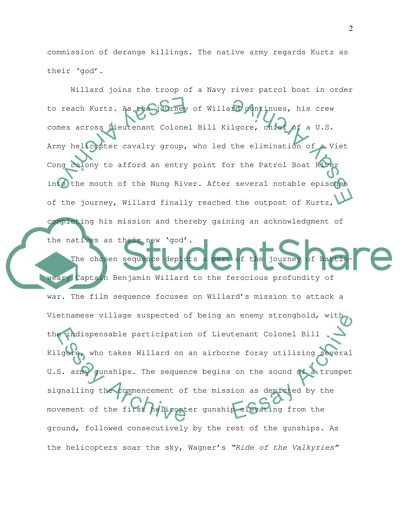Cite this document
(Microanalysis of Apocalypse Now by F.Coppola Movie Review Example | Topics and Well Written Essays - 1250 words, n.d.)
Microanalysis of Apocalypse Now by F.Coppola Movie Review Example | Topics and Well Written Essays - 1250 words. https://studentshare.org/visual-arts-film-studies/1545803-micro-analysis-of-apocalyspe-now-1979
Microanalysis of Apocalypse Now by F.Coppola Movie Review Example | Topics and Well Written Essays - 1250 words. https://studentshare.org/visual-arts-film-studies/1545803-micro-analysis-of-apocalyspe-now-1979
(Microanalysis of Apocalypse Now by F.Coppola Movie Review Example | Topics and Well Written Essays - 1250 Words)
Microanalysis of Apocalypse Now by F.Coppola Movie Review Example | Topics and Well Written Essays - 1250 Words. https://studentshare.org/visual-arts-film-studies/1545803-micro-analysis-of-apocalyspe-now-1979.
Microanalysis of Apocalypse Now by F.Coppola Movie Review Example | Topics and Well Written Essays - 1250 Words. https://studentshare.org/visual-arts-film-studies/1545803-micro-analysis-of-apocalyspe-now-1979.
“Microanalysis of Apocalypse Now by F.Coppola Movie Review Example | Topics and Well Written Essays - 1250 Words”. https://studentshare.org/visual-arts-film-studies/1545803-micro-analysis-of-apocalyspe-now-1979.


